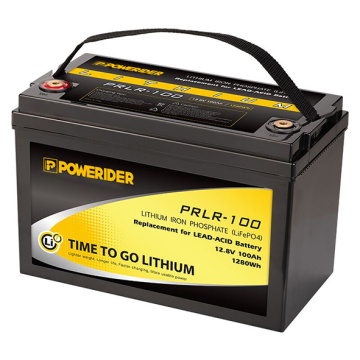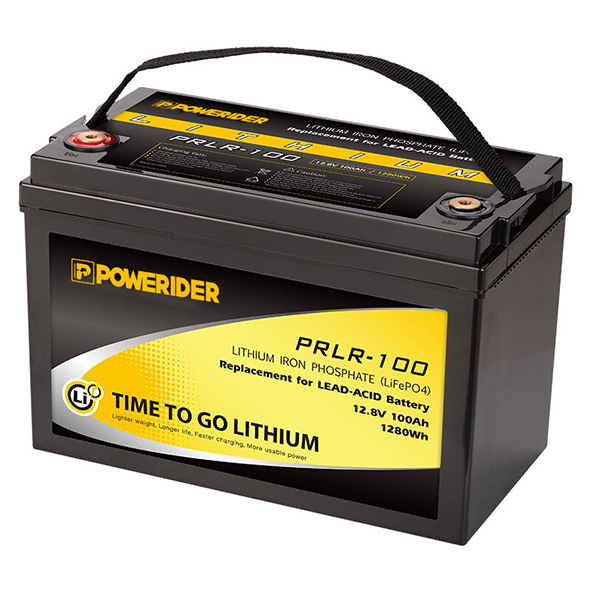
Privacy statement: Your privacy is very important to Us. Our company promises not to disclose your personal information to any external company with out your explicit permission.
![]() April 19, 2024
April 19, 2024

Recently, the research team at Harvard University in the United States has developed a new type of flow battery. The team said that this flow battery can be used not only in the smart phone field, but also in new energy applications including renewable energy.
In the mobile era, battery technology has become a top priority. It can even be said that there is no mobile era without a battery. However, problems such as weak endurance exist in the battery of mobile devices. The breakthrough in battery technology has always been a cutting-edge problem, which has restricted the further development of the mobile era. Therefore, researchers have been exploring more efficient power generation to improve their endurance.

In fact, flow batteries are not new and have been around since the 1960s. Compared to Lithium Batteries , flow batteries do have some advantages. However, this technology has been in the research and development stage and has not been put into practical use. The reason is its own limitations. Despite the obstacles, the exploration continues. Humans are constantly looking for cleaner energy sources to upgrade battery technology while using relatively stable new battery technologies.
First, the characteristics of the flow battery determine the advantages, some aspects are better than the Lithium Battery
Harvard's team is led by Michael Aziz, Professor of Materials and Energy Technology, and Roy Gordon, Professor of Chemistry and Materials Science. The new flow battery they studied is based on organic molecules in a neutral pH aqueous solution for power generation, which is superior to current battery products in terms of safety and longevity.
In fact, the field of liquid flow batteries is not a "bad land". In the 1960s, redox batteries of iron-chromium systems have emerged, which can be regarded as the precursor of all-vanadium flow batteries. After years of research and development, the technology has made great progress and is expected to be put into commercial use. This flow battery does have advantages over lithium-ion batteries .
First, its scale can be large or small, and the design is flexible.
For energy storage systems, the most important factors are electricity and power. In general, the power that a vanadium flow battery can withstand depends on the size of the stack, and the amount of electricity is proportional to the size of the tank. Regardless of the engineering project's requirements for the Energy Storage System, the designer has the flexibility to make the appropriate design and be able to make adjustments at any time.
The picture above shows the structure of the flow battery
In contrast, lithium-ion batteries are made by applying energy storage materials to the surface of the current collector to form electrodes. The process and performance are fixed, and it is difficult to adjust according to specific projects. In both cases, the advantages of the flow battery are obvious.
More importantly, the flow battery is scalable. The flow battery has almost the same structure and control method regardless of the storage capacity. As long as the storage electrolyte is uniformly mixed, the SOC (charge and discharge depth) can be ensured.
If you want to make a lithium battery of the same size, you need to stack the number of batteries, while using an extremely complex BMS (battery management system) to manage the temperature and SOC of each battery. A little careless, overcharge, overdischarge, and overheating can cause the battery to be scrapped or even dangerous, which is why the smartphone battery sometimes explodes.
Second, the flow battery has a long life.
At present, the life of lithium batteries on the market is about 1000~5000 times. The main energy storage principle is the embedding and deintercalation on solid-state electrodes, which is prone to cracks and ends the battery life.
The charging and discharging mechanism of the flow battery is based on the change of the valence, rather than the physical change of the ordinary battery, so the service life is extremely long. Moreover, the all-vanadium flow battery is separated from the positive and negative electrodes by the ion exchange membrane, which avoids the possibility of cross-infection of the positive and negative electrolytes due to mixing, and has a longer life than other flow batteries.
Third, the flow battery is extremely safe.
As mentioned in the first point, the characteristics of the flow battery ensure its safety. There is no fire or explosion hazard, and there will be no safety problems even if it encounters a large current.
In addition, the energy efficiency of the flow battery is as high as 75%~80%, the starting speed is only 0.02s, and the battery components are mostly cheap carbon materials, and no precious metal is needed as a catalyst.
At present, the global production of all-vanadium flow battery companies include UniEnergy Technologies, Austria, Gildemeister, Sumitomo Electric, and Dalian Rongke Energy Storage Technology Development Co., Ltd., China.
Among them, Rongke Energy Storage Company has realized the total installed capacity of all vanadium redox flow batteries exceeding 12MW, accounting for 40% of the world's total installed capacity, and also has the world's first 5MW large-scale industrial energy storage device that is actually connected to the grid. This means that China's various indicators are at the international leading level.
Although the flow battery has so many advantages and has a certain scale of production and application, it has not seen its large-scale commercialization and entering the consumer market at present, because the flow battery itself has many limitations.
Second, the flow battery has been delayed for commercial use, and its own limitations are more
As an energy storage system, the flow battery is still in the experimental stage in the field of large-scale energy storage such as wind power, and commercial use is even more difficult. The new flow battery researched by Harvard University above is also in the research and development stage. It can first explore the limitations of the main vanadium-based batteries in the existing flow batteries.
Theoretically, the vanadium compound may be used as an additive, into the existing lithium cell, which is similar to the use of graphene.
However, in the case of vanadium battery cathode liquid, the pentavalent vanadium ion precipitates a highly toxic substance called vanadium pentoxide at a temperature higher than 45 degrees. Precipitation of this material can block the flow path, coat the carbon felt fibers, deteriorate the performance of the stack, and eventually cause the battery to be scrapped. More importantly, the highly toxic substance of vanadium pentoxide may have serious consequences.
In addition, all vanadium redox flow batteries require a very high cost. For example, a 5 kW flow battery requires a total investment of 406,000 main material costs, and additional secondary materials and labor costs.
Finally, the energy density of the flow battery is extremely low, about 40 Wh/kg, and the battery is liquid, so the floor space is large.
Based on the above limitations, the flow battery is difficult to be applied on a large scale, and it is more difficult to commercialize.
The exploration of flow batteries represents the determination of mankind to constantly seek new energy, but this technology is not mature enough. In contrast, graphene battery technology is relatively safe and has been applied in smart devices, and humans are constantly looking for cleaner energy for power generation.
Third, the sound battery technology is commercially available, and there are more possibilities in the future.
In today's emerging battery technology, graphene battery technology is relatively safe. At the end of last year, Huawei introduced the first lithium-ion battery using graphene technology at the 57th Japan Battery Conference. This battery uses a new high-temperature technology to increase the upper limit temperature of lithium-ion batteries by 10 degrees and its service life is twice that of ordinary lithium-ion batteries.
Graphene seems to be more reliable than the new flow battery that is still under development. Of course, graphene itself has some limitations, but it has been applied in smart devices.
Therefore, as far as the current situation is concerned, graphene will be more used in the upgrade of battery technology in the next stage. On the road of battery technology development, it will not work, and the transition through safe and mature technology should achieve better results.
Of course, this is not to say that the battery technology field can be stagnant for stability. On the contrary, in order to make battery technology no longer a drag on the development of the mobile era, it should be bolder to use all possible energy to power the advancement of battery technology. There have been related studies and progress has been made.
For example, the research team at the University of Pennsylvania recently developed a new power generation method that uses the concentration difference between the carbon dioxide emitted by the fossil fuel power plant and the carbon dioxide in the air to generate electricity. This device, called "flow cell", produces an average power density of 0.82 watts per square meter, which is about 200 times higher than the value obtained by previous approximation methods. The research results have been published in the latest issue of Environmental Science and Technology.
Coincidentally, Finnish scientists are also studying how to use kinetic energy, heat and solar energy to make some progress in powering equipment. Researchers have developed a ferroelectric material called KBNNO that converts heat and pressure into electricity. Researchers at the University of Oulu in Finland use the perovskite crystal structure to extract energy from multiple energy sources and hope to collect more energy through research.
The manufacturing process for such equipment is not complicated, and once the best materials are found, it is possible to commercialize the technology in the next few years. If this vision is realized, we may not have to plug the mobile device into the socket to charge, but instead get a steady stream of power from natural energy for true energy cleaning.
Through the above results, we can make optimistic predictions. In the future, there will be more new technologies in the battery field, which can improve battery utilization and endurance. In the development of battery technology and any kind of technology, it is necessary to be stable and mature, and also need bold and avant-garde innovation, the combination of the two can better promote the further development of the mobile era.
The above is the Is the flow battery replacing the lithium ion battery? a graphene we have listed for you. You can submit the following form to obtain more industry information we provide for you.
You can visit our website or contact us, and we will provide the latest consultation and solutions
Send Inquiry
Most Popular
lastest New
Send Inquiry

Privacy statement: Your privacy is very important to Us. Our company promises not to disclose your personal information to any external company with out your explicit permission.

Fill in more information so that we can get in touch with you faster
Privacy statement: Your privacy is very important to Us. Our company promises not to disclose your personal information to any external company with out your explicit permission.